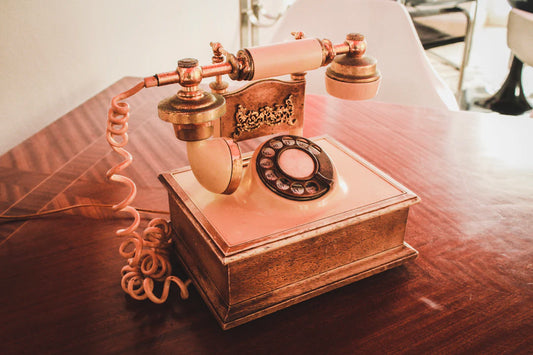In the digital age, where our personal data is frequently at risk of being intercepted or misused, understanding privacy technologies is crucial. Among these technologies, end-to-end encryption (E2EE) stands out as a fundamental aspect of privacy phones. This article delves into what end-to-end encryption is, why it matters, and how you can safeguard your conversations in an increasingly connected world. Along the way, we will explore the role of tools like a Faraday bag in enhancing your privacy.
What is End-to-End Encryption?
End-to-end encryption is a method of data transmission where only the communicating users can read the messages. In an E2EE system, the data is encrypted on the sender's device and only decrypted on the recipient's device, ensuring that no third party, not even the service provider, can access the decrypted content.
How Does End-to-End Encryption Work?
To understand the mechanics of end-to-end encryption, consider the following steps:
- Encryption: When you send a message, it is converted into an unreadable format using encryption algorithms. This ciphertext can only be decrypted with a private key.
- Transmission: The encrypted message travels over the internet or cellular networks to the recipient.
- Decryption: The recipient's device uses a corresponding decryption key to convert the ciphertext back into a readable format.
Only the sender and receiver possess the keys needed to unlock the communication, securing it against potential eavesdroppers.
The Importance of End-to-End Encryption
As more individuals and businesses turn to digital communication, the need for improved security measures has never been greater. Here are several reasons why end-to-end encryption is vital:
- Data Privacy: E2EE empowers users by keeping their private conversations shielded from prying eyes. This is particularly important for personal discussions, sensitive business communications, or health-related information.
- Protection from Interception: With E2EE, even if a message is intercepted, it remains unreadable without the decryption key. This significantly reduces the chances of data breaches.
- Trust and Legal Compliance: Businesses that prioritize encryption can enhance trust with their customers. Compliance with privacy legislation, such as GDPR, can also safeguard against hefty fines.
Who Uses End-to-End Encryption?
End-to-end encryption is not just beneficial for individuals; it is increasingly being adopted by various organizations as a standard security practice. Industries such as finance, healthcare, and legal services have rapidly integrated E2EE into their communication strategies to ensure data integrity and confidentiality.
Challenges of End-to-End Encryption
While end-to-end encryption is a powerful tool for protecting privacy, it does come with its own set of challenges:
- User Experience: E2EE can complicate user experience by requiring additional steps for authentication and encryption, potentially discouraging some users.
- Data Recovery: If a user loses their decryption key or access to their device, they may permanently lose encrypted data, which could be problematic for both personal and business communications.
- Government and Legal Pressure: Some governments may impose regulations that challenge the use of E2EE, particularly in discussions around national security and law enforcement.
Integrating End-to-End Encryption in Privacy Phones
As concerns surrounding privacy and data security grow, privacy phones equipped with end-to-end encryption have emerged as a solution. Here are ways you can integrate E2EE into your mobile experience:
- Use Secure Messaging Apps: Many messaging platforms now offer E2EE as a standard feature. Opt for these applications to protect your conversations.
- Prioritize Privacy Phones: Look for phones marketed explicitly for privacy, equipped with E2EE features and comprehensive security settings.
- Take Advantage of a Faraday Bag: A Faraday bag can further enhance your privacy by blocking electromagnetic fields that may otherwise allow data interception when your phone is not in use. By placing your privacy phone into a Faraday bag, you can effectively stop hacking attempts, signal tracking, and other forms of unauthorized access.
Choosing the Right Security Apps
When selecting apps that utilize end-to-end encryption, consider the following:
- Reputation: Research and opt for apps backed by security experts with a proven track record in data protection.
- Open Source Code: Prefer apps that allow public access to their source code so security vulnerabilities can be recognized and addressed promptly.
- User Controls: Choose applications that provide users with control over encryption keys and user data.
How Does E2EE Impact Businesses?
For businesses, adopting end-to-end encryption can significantly bolster security and improve trust with clients. With the rise of cyber threats, organizations must prioritize the confidentiality of sensitive information.
Benefits for Businesses
Implementing E2EE presents various advantages:
- Enhanced Customer Trust: Customers feel more secure sharing personal information with businesses that use encryption to protect their data.
- Risk Mitigation: Businesses can minimize the risk of data breaches, protecting both corporate data and client information.
- Regulatory Compliance: Properly implemented encryption strategies can help businesses comply with data protection regulations, thus avoiding potential legal issues.
Challenges for Businesses
While the benefits are undeniable, businesses must also be aware of the potential challenges associated with encryption:
- Operational Complexity: Implementing E2EE may require extensive changes in current processes, particularly if existing systems are not compatible.
- Employee Knowledge and Training: Employees must be educated on best practices surrounding encryption to avoid mishaps such as losing decryption keys.
- Cost: Investing in new technologies to implement E2EE can be a significant upfront expense for businesses.
The Future of End-to-End Encryption
The landscape of digital privacy continues to evolve, and so does the role of end-to-end encryption. Technological advances, emerging threats, and new privacy regulations will shape how encryption is used in the future.
Trends to Watch
Some trends indicating the future direction of E2EE include:
- Integration with AI: The rise of artificial intelligence may lead to smarter encryption tools that can adapt in real-time to mitigate security threats.
- Wider Adoption: As consumers demand more privacy, E2EE will become a prerequisite in securing all communications, from personal to business.
- Decentralized Solutions: The move towards decentralized systems may bolster E2EE applications, allowing users to maintain control over their data.
Your Journey to Enhanced Privacy Starts Now
Understanding end-to-end encryption is essential for anyone looking to maintain their privacy in today's digital world. Whether for personal conversations or sensitive business communications, adopting these principles can fortify your defenses against potential privacy breaches. By exploring the available tools and incorporating practices such as utilizing a Faraday bag, you can create a personalized privacy strategy that safeguards your important communications.
With the rapid advancements in technology and the increasing importance of data privacy, being proactive in securing your messages is not just advisable—it's essential. Prioritize your privacy today and make end-to-end encryption a vital part of your digital life!





